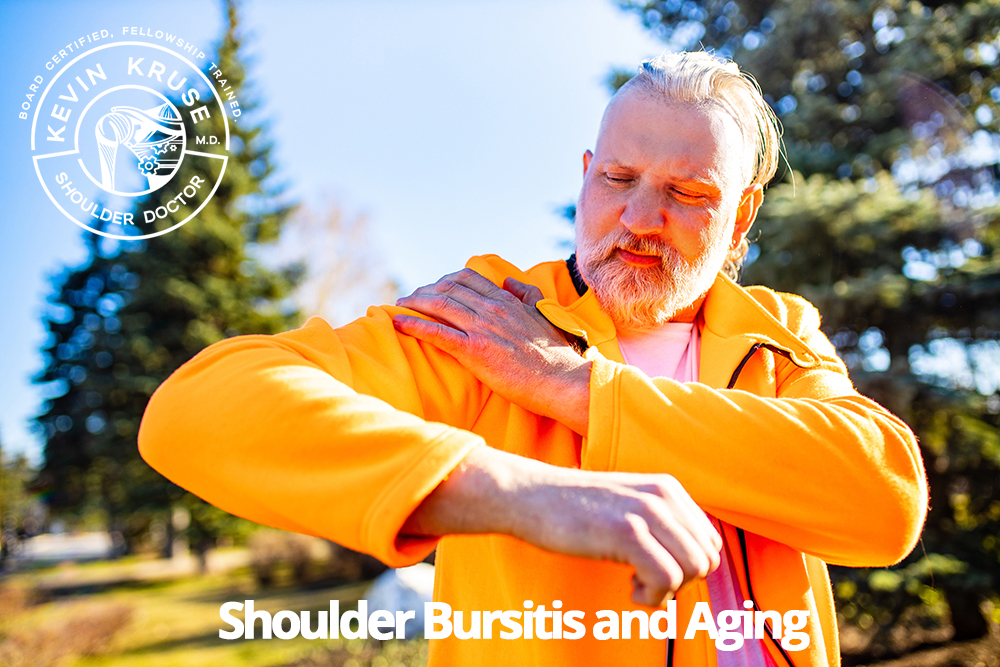As we grow older, our bodies naturally experience a variety of changes, and unfortunately, our joints are no exception. One common issue that many older adults face is shoulder bursitis, a painful condition that can severely affect mobility and quality of life. Let’s dive into how aging contributes to this condition and what can be done to manage it effectively.
What is Shoulder Bursitis?
Shoulder bursitis is the inflammation of the bursa, a small, fluid-filled sac that cushions the bones, tendons, and muscles around the shoulder joint. When this sac becomes irritated, it can lead to swelling and pain, making it difficult to move the shoulder.
Understanding the Role of the Bursa
Think of the bursa as a cushion that prevents your bones from rubbing together during movement. It absorbs impact and ensures smooth motion. When it’s inflamed, it loses its ability to protect, leading to sharp pain and stiffness.
Symptoms of Shoulder Bursitis
The key symptoms of shoulder bursitis include pain, swelling, tenderness, and a limited range of motion. You might feel these symptoms especially when lifting your arm or reaching behind you, which can be particularly challenging for older adults.
How Does Aging Affect Shoulder Joints?
As we age, our joints go through natural wear and tear, which makes conditions like shoulder bursitis more likely. Aging joints lose flexibility, cartilage thins, and tendons weaken, all of which contribute to joint inflammation.

Natural Wear and Tear of Joints
Over time, the repetitive use of our shoulders, especially if you’re active or worked physically demanding jobs, causes the soft tissues to wear down. This deterioration makes the shoulder joint more prone to injury and conditions like bursitis.
Impact of Aging on the Bursa
In older adults, the bursa may become more susceptible to irritation as it loses some of its ability to absorb shock and provide lubrication to the joint. This makes elderly individuals more prone to inflammation and discomfort.
Why Are Elderly More Susceptible to Shoulder Bursitis?
Aging brings about several changes in the musculoskeletal system, making shoulder bursitis more likely in older individuals.
Reduced Joint Flexibility
Aging joints tend to lose their flexibility, causing tightness in the shoulder. This can lead to overuse of the muscles and bursae, increasing the risk of bursitis.
Muscle Weakness and Overuse
As muscles weaken with age, older adults may rely more on their shoulder joints for everyday tasks, leading to overuse injuries like shoulder bursitis.
Common Symptoms of Shoulder Bursitis in Elderly
In elderly individuals, shoulder bursitis may present differently than in younger adults.
Pain and Stiffness
Pain is the most common symptom, particularly when you move the arm or lie on the affected shoulder. The pain can be sharp or achy, making everyday tasks difficult.
Limited Range of Motion
A stiff shoulder is another hallmark symptom. You might find it hard to reach above your head or behind your back.
How Aging Joints Contribute to These Symptoms
As your joints age, they lose lubrication and flexibility, which contributes to inflammation and intensifies the discomfort of bursitis.
Pain Management for Shoulder Bursitis in Aging Population
Managing shoulder bursitis in the elderly requires a combination of lifestyle adjustments and medical treatments.
Home Remedies and Lifestyle Changes
Simple remedies like icing the shoulder, gentle stretching, and rest can help alleviate mild symptoms. Incorporating anti-inflammatory foods into your diet, like omega-3 fatty acids, can also support joint health.
Medical Treatments and Therapies
For more severe cases, medical treatments like corticosteroid injections or physical therapy may be recommended. These options help reduce inflammation and improve shoulder mobility.
Preventing Shoulder Bursitis as You Age
While shoulder bursitis is common in aging individuals, there are steps you can take to reduce your risk.
Strengthening Exercises for Shoulder Health
Incorporating light weight-bearing exercises that target the shoulders and upper back can help strengthen the muscles and provide better support for the joints.
Proper Posture and Joint Care
Maintaining good posture is key to preventing unnecessary strain on your shoulders. Additionally, avoid repetitive overhead movements, and take frequent breaks to avoid overuse injuries.
Shoulder bursitis is a common condition among older adults, but it doesn’t have to limit your quality of life. By understanding how aging affects the shoulder joint and taking steps to manage and prevent bursitis, you can maintain shoulder health well into your golden years.
FAQs About Shoulder Bursitis and Aging
Is shoulder bursitis more common in older adults?
Yes, as the joints naturally wear down with age, older adults are more prone to developing shoulder bursitis.
What’s the best way to relieve shoulder bursitis pain at home?
Icing the shoulder, resting, and performing gentle stretching exercises can help manage pain at home.
Can shoulder bursitis go away on its own in elderly?
In mild cases, shoulder bursitis may resolve with proper rest and care. However, it’s always best to consult a healthcare provider.
How long does it take to recover from shoulder bursitis in elderly?
Recovery time varies, but with proper treatment, it can take anywhere from a few weeks to a few months.
Are there long-term complications of shoulder bursitis for aging adults?
If left untreated, shoulder bursitis can lead to chronic pain and limited mobility.